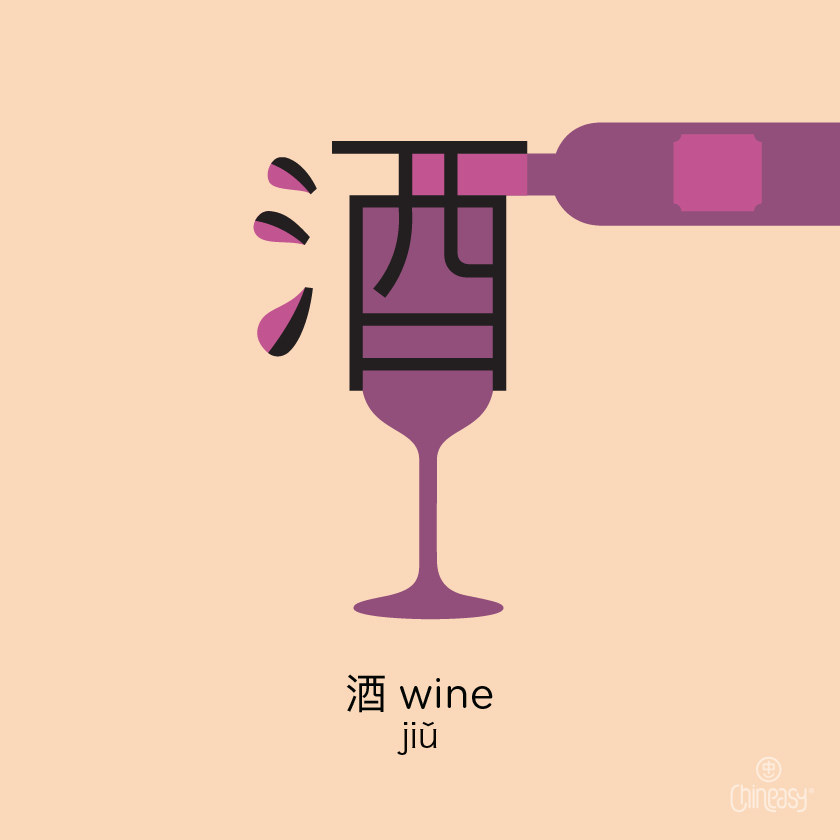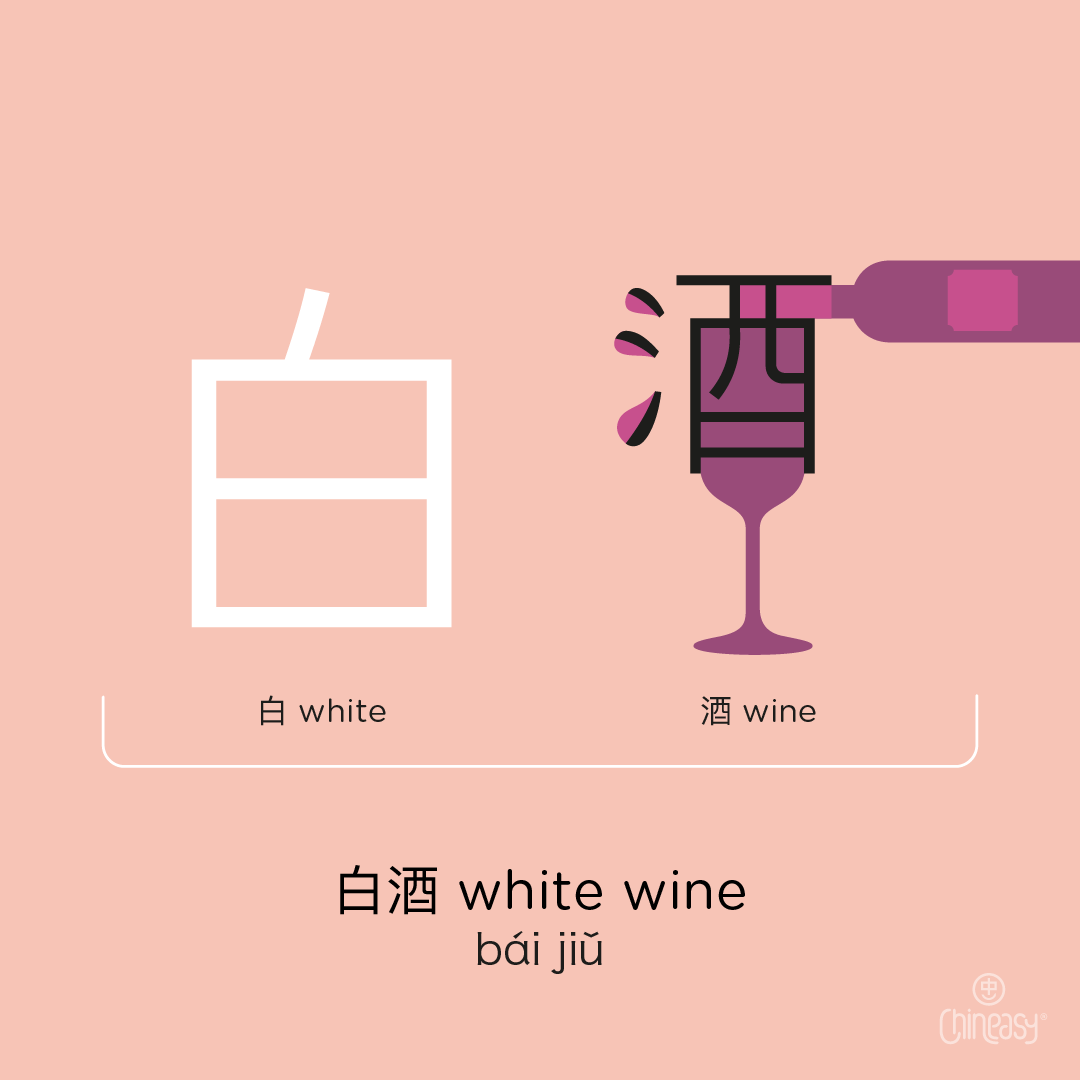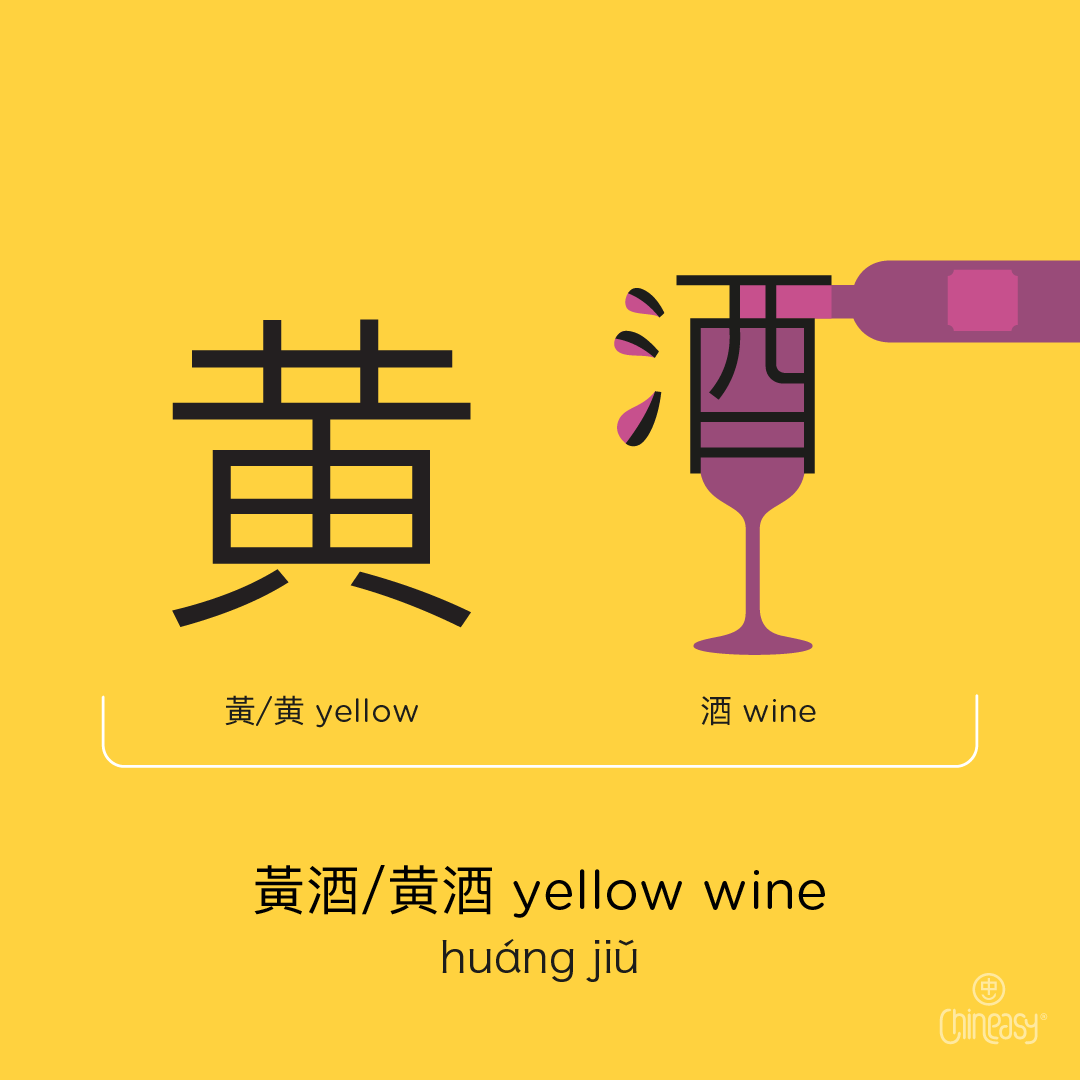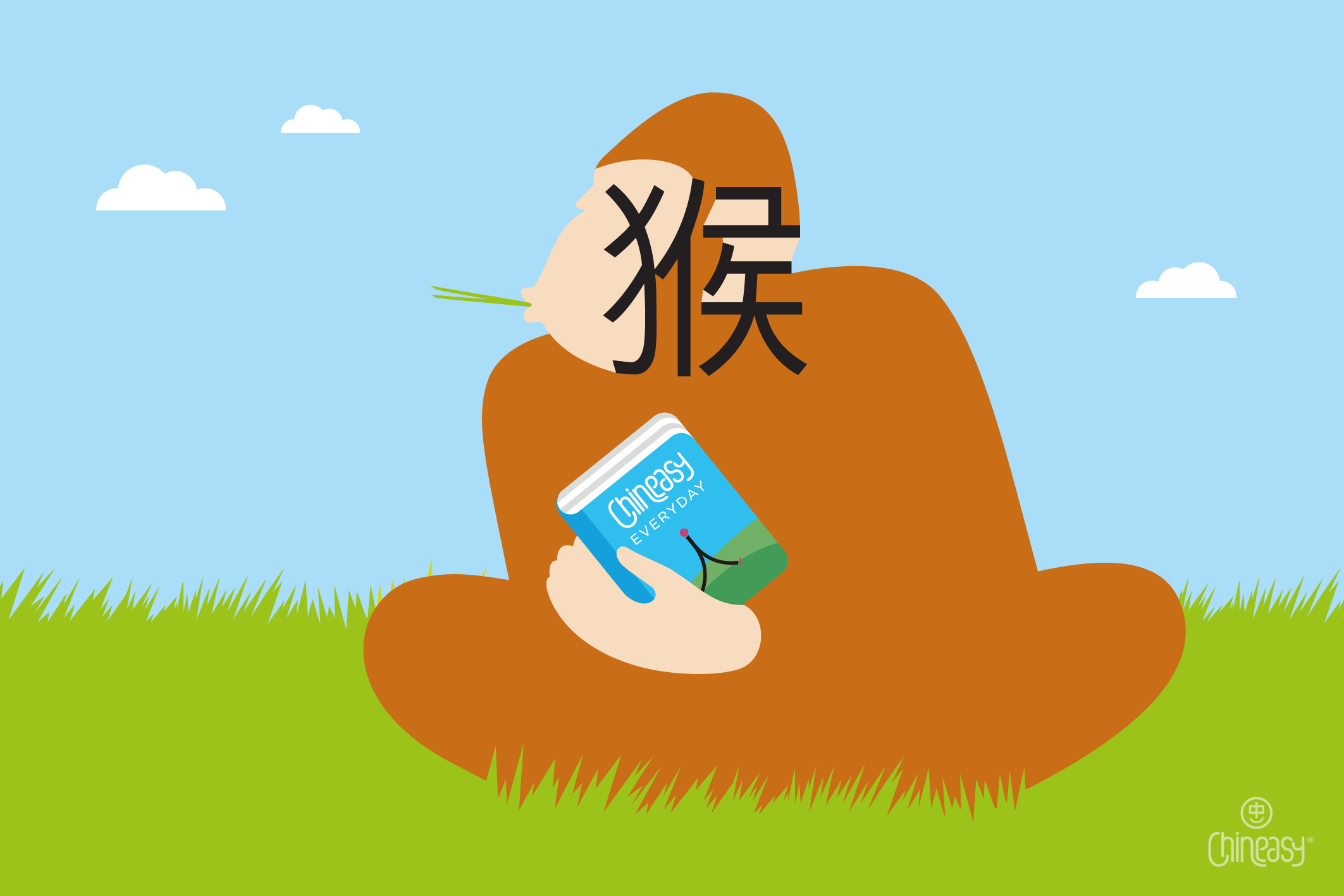Are you a wine person? When it comes to the best wine-producing countries, you might think of France, Spain, or Argentina. But how about China? Chinese wines might not be on your radar yet.
However, today, we’re going to fill this gap and take you on a delightful journey into the world of Chinese white and yellow wines.
These two types of wine hold a unique and special place in Chinese history and culinary tradition.
So, pour yourself a glass of your favorite beverage, sit back, and let’s embark on this fascinating journey together!

White Wine – The Baijiu Experience
Chinese white wine, or Baijiu (白酒; bái jiǔ, pronounced “bye-joe”), is a potent, clear liquor made from grains such as sorghum, wheat, rice, and corn.
Despite the name, Baijiu is not a wine in the traditional Western sense but rather a distilled spirit. It boasts an impressively high alcohol content, typically ranging from 40% to a staggering 60%!

The Brewing Process
The unique flavor of Baijiu is the result of an intricate and traditional brewing process that dates back centuries. The process begins with the fermentation of grains using a special fermentation starter called qu (麴; qū, pronounced “choo“). This fermentation starter is made from a mixture of grains and contains natural yeasts and molds that are essential for the fermentation process.
Once the grains are mixed with the qu, they are allowed to ferment in large earthenware jars or pits for a period ranging from several months to several years, depending on the desired flavor profile.
During fermentation, the complex interaction between the grains, yeast, and molds creates a wide array of aromatic compounds that contribute to Baijiu’s distinctive flavors.
After fermentation, the mixture is distilled multiple times to achieve the desired purity and concentration. The distillation process further enhances the flavors, resulting in a spirit with a rich and complex aroma.
Flavor Categories
Baijiu (白酒) is categorized into four main aroma types, each with distinct characteristics. Here’s how they compare to other Western spirits:
- Sauce aroma (醬香/酱香; jiàng xiāng): Known for its rich, umami flavor with a complex and savory profile. The most famous example is Moutai (茅台; máotái), which has a deep, soy sauce-like aroma.
- Comparison: Comparable to a robust and earthy spirit like a well-aged Scotch whisky, known for its deep, complex flavors and rich, lingering finish.
- Strong aroma (濃香/浓香; nóngxiāng): Characterized by its robust and pungent aroma with fruity and floral notes. Luzhou Laojiao is a prominent example.
- Comparison: Similar to a bold and aromatic spirit like rum or cognac, which are known for their intense fruitiness and strong aromatic presence.
- Light aroma (清香; qīng xiāng): Known for its clean, crisp, and delicate flavor, often with a hint of sweetness. Examples include Fenjiu.
- Comparison: Comparable to a light and refreshing spirit like vodka or gin, which have crisp, clean flavors and a subtle sweetness.
- Rice aroma (米香; mǐ xiāng): Made primarily from rice, this Baijiu has a mild and slightly sweet flavor, often with floral and fresh rice notes. An example is Guilin Sanhua.
- Comparison: Similar to a gentle and aromatic spirit like sake, known for its mild sweetness and delicate floral notes.
Best Ways to Consume Baijiu
Baijiu (白酒) is traditionally consumed neat at room temperature, allowing drinkers to fully appreciate its powerful aromas and flavors.
It is often served in small ceramic cups, and it is customary to drink it in one gulp during toasts.
Pairing Baijiu with Food: Baijiu pairs exceptionally well with rich and flavorful Chinese dishes. The strong, aromatic profile of Baijiu complements the bold flavors of Chinese cuisine, such as spicy Sichuan dishes, hearty braised meats, and savory dumplings.
The high alcohol content also helps to cleanse the palate between bites, enhancing the overall dining experience.
Tasting Tips: When tasting Baijiu, take a moment to appreciate its aroma before sipping. Swirl the cup gently and inhale deeply to experience the full bouquet of scents. Take a small sip and let it linger on your palate, noting the complex flavors that evolve.
While Baijiu can be an acquired taste, approaching it with an open mind can lead to a rewarding and enjoyable experience.
Fun Fact:
Baijiu is the world’s most consumed spirit by volume, even surpassing vodka, whiskey, and rum!
Yellow Wine – The Huangjiu Elegance
Huangjiu (黃酒/黄酒; huáng jiǔ, pronounced “hwang-jyoh”) is considered one of the most ancient wines, alongside beer (啤酒; pí jiǔ) and grape wine (葡萄酒; pú táo jiǔ).
It holds a significant place in Chinese history and culture. When you read classic Chinese literature and encounter mentions of “wine” (酒; jiǔ), it is often referring to Huangjiu (黃酒/黄酒).
The wine is made from grains such as glutinous rice, millet, or wheat, and water.
Its Chinese name 黃酒/黄酒, literally “yellow wine,” comes from the amber hue it acquires during the brewing process. Huangjiu’s alcohol content is significantly lower than Baijiu’s, ranging from 8% to 20%.
The wine holds a significant place in traditional Chinese medicine (TCM). It is not only appreciated as a beverage but also valued for its medicinal properties. Huangjiu is sometimes used as a solvent for herbal medicines to enhance their effects and aid in the delivery of medicinal properties throughout the body.
A well-known example is the medicinal wine called “Danggui Huangjiu” (當歸黃酒/当归黄酒; dāngguī huángjiǔ), which combines Huangjiu with Angelica sinensis (當歸/当归; dāngguī) to promote blood circulation and treat menstrual disorders.

The Brewing Process
Huangjiu’s unique flavor profile is achieved through a meticulous brewing process that has been refined over thousands of years.
The process starts with steaming the grains to gelatinize the starches, making them more accessible for fermentation. After steaming, the grains are cooled and mixed with qu (麴; qū, pronounced “choo“), a fermentation starter that contains natural yeasts and molds. The mixture is then placed in large earthenware jars or vats for fermentation.
Unlike Baijiu, which undergoes solid-state fermentation, Huangjiu fermentation involves a thicker, porridge-like mixture, allowing for greater interaction between the liquid and solid components.
The Huangjiu brewer needs to carefully monitor the fermentation process. This includes checking the consistency and potentially adding more water or adjusting conditions as needed to ensure optimal fermentation.
However, the specific practice of adding water daily may vary based on traditional techniques and the specific type of Huangjiu being produced.
This process can take several months to a few years, during which time the wine develops its characteristic amber color and complex flavors.
Taste Comparison to Western Wine
Huangjiu has a distinctive taste that sets it apart from Western wines, but it shares some similarities with sherry:
- Flavor Notes: Huangjiu typically has a slightly sweet and umami-rich flavor with notes of caramel, soy sauce, and nuttiness, similar to sherry. In contrast, many Western wines, especially white wines, tend to have more fruity, floral, and citrusy notes.
- Mouthfeel: Huangjiu often has a thicker, more viscous mouthfeel compared to the lighter, crisper texture of many Western white wines. This is more akin to the richer, fuller body of sherry.
- Aroma: The aroma of Huangjiu can be quite strong and savory, often described as earthy or toasty, which can be reminiscent of some styles of sherry.
Shaoxing wine (紹興酒/绍兴酒; shào xīng jiǔ), named after the city of Shaoxing in China’s Zhejiang province, is one of the most famous varieties of Huangjiu. It is aged in large ceramic pots, and the taste can range from sweet to semi-dry or dry. Huangjiu is often used in Chinese cooking, as it imparts a delicious, rich flavor to dishes.
Best Ways to Consume Huangjiu
Huangjiu is a versatile wine that can be enjoyed in various ways, depending on the season and personal preference.
Traditionally, Huangjiu is often served warm, especially in the colder months. Warming the wine enhances its rich flavors and aromas, making it a comforting and soothing drink.
To warm Huangjiu, place the bottle or cup in a bowl of hot water for a few minutes. In warmer weather, it can also be enjoyed at room temperature.
Pairing Huangjiu with Food: Huangjiu pairs wonderfully with a wide range of Chinese dishes. Its slightly sweet and umami-rich flavor complements savory dishes like braised meats, seafood, and rich sauces.
It is also a popular ingredient in Chinese cooking, used to add depth and complexity to dishes such as braised pork belly (紅燒肉/红烧肉; hóng shāo ròu) and drunken chicken (醉雞/醉鸡; zuì jī).
Tasting Tips: When tasting Huangjiu, take a moment to appreciate its color and aroma. Swirl the wine gently in your cup to release its bouquet. Take small sips and let the wine linger on your palate, noting the layers of flavors that unfold, from sweet to slightly savory and sometimes with a hint of nuttiness.
Fun Fact:
Huangjiu’s origin can be traced back over 3,000 years to the Shang and Zhou periods, showcasing its deep historical roots in Chinese culture.
Cultural Significance and Traditions
Both Baijiu and Huangjiu hold a special place in Chinese culture.
Baijiu 白酒
Baijiu is an essential part of Chinese celebrations, such as weddings and business banquets, where it is often consumed as a series of ritual toasts. It symbolizes respect and good fortune and is commonly offered during festivals and special occasions.
Baijiu varies significantly in price, from affordable entry-level bottles to extremely expensive premium brands like Moutai.
For example, Moutai 1935, a limited-edition Baijiu, can sell for several hundred dollars per bottle, with prices sometimes exceeding $1,000.
For those new to Baijiu, starting with an entry or mid-range level bottle is advisable, allowing you to explore unique flavors without a hefty investment.
Fun Fact:
During important meetings, it is customary for Chinese hosts to offer their guests Baijiu as a sign of hospitality. Don’t be surprised if you’re encouraged to participate in a friendly Baijiu-drinking competition!
Huangjiu 黃酒/黄酒
Huangjiu, with its rich history and medicinal uses, is enjoyed as a refined beverage during quiet moments and is also valued for its role in traditional Chinese medicine (TCM). It is often consumed for its warming properties and to promote health and vitality.
Conclusion
Chinese white and yellow wines each offer a unique and delightful experience, steeped in rich history and tradition.
Whether you prefer the powerful kick of Baijiu (白酒) or the refined taste of Huangjiu (黃酒/黄酒), exploring these drinks can give you a deeper appreciation of Chinese culture and its millennia-old culinary heritage.
So, next time you’re at a Chinese restaurant or visiting China, don’t hesitate to raise a glass and say, “gan bei” (乾杯/干杯; gān bēi) – Cheers!
Disclaimer: Please remember that underage drinking is illegal. Always drink responsibly, and never drink and drive.



